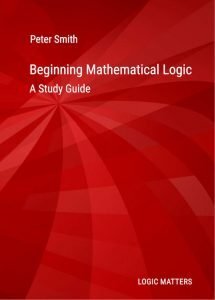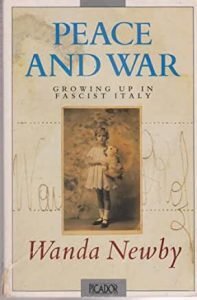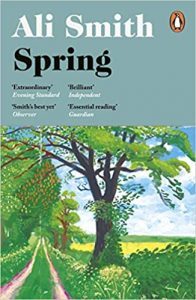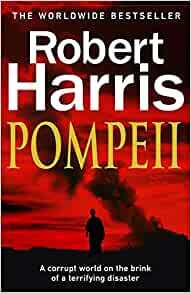Peter Smith's Blog, page 37
January 8, 2022
Partial functions and free logic
How much should a mathematical logician care about free logic? Worries about empty domains or empty names aren’t going to give the mathematician much pause. But there is a more interesting case.
The standard semantic story treats function expressions of a FOL language as denoting total functions — for any object of the domain as input, the function yields a value in the domain as output. Mathematically, however, we often work with partial functions: that’s particularly the case in computability theory, where the notion of a partial recursive function is pivotal. Partial recursive functions, recall, are defined by allowing the application of a minimization or least search operator, which is basically a definite description operator which may fail to return a value. So, it might well seem that in order to reason about computable functions we will need a logic which can accommodate partial functions and definite descriptions that fail to refer, and this means we will need a free logic.
Or at least, this is a claim often made by proponents of free logic. And the claim is vigorously pressed e.g. by Oliver and Smiley in Ch. 11 of their Plural Logic (as they set up the singular logic on which they are going to build their plural logic). Yet O&S give no examples at all of places where mathematical reasoners doing recursive function theory actually use arguments that need to be regimented by changing our standard logic. And if we turn to mainstream theoretical treatments of partial recursive functions in books on computability — including those by philosophically minded authors like Enderton, Epstein & Carnielli or Boolos &Jeffrey — we find not a word about needing to revise our standard logic and adopt a free logic. So what’s going on here?
I think we have to distinguish two quite different claims:
Suppose we want to revise the usual first-order language of arithmetic to allow partial recursive functions, and then construct a formal theory in which we can e.g. do computations of the values of the partial recursive functions (when they have one) in the way we can do simpler formal computations as derivations inside (or inside
(or inside  , formal Primitive Recursive Arithmetic). Then this formal theory with its partial functions will need to be equipped with a free logic to allow for reference failures.When, it comes to proving general results about partial recursive functions in our usual informal mathematical style, we need to deploy reasoning which presumes a free logic.
, formal Primitive Recursive Arithmetic). Then this formal theory with its partial functions will need to be equipped with a free logic to allow for reference failures.When, it comes to proving general results about partial recursive functions in our usual informal mathematical style, we need to deploy reasoning which presumes a free logic.Now, (1) may be true. But mathematicians in fact seem to have very little interest in that formalization project (though some computer scientists have written around the topic, though what I have read has been pretty unclear). What they care about is the general theory of computability.
And there seems no good reason for supposing (2) is true. Work through a mathematical text on the general theory of computability, and you’ll see that some care is taken to handle cases where a function has no output. For example, we introduce the notation  to indicate that
to indicate that  indeed has an output for input
indeed has an output for input  ; and we introduce the notation
; and we introduce the notation  to indicate that either (i) both
to indicate that either (i) both  and [image error] and [image error] or (ii) neither
and [image error] and [image error] or (ii) neither  nor
nor  is defined. And then our theorems are framed using this sort of notation to ensure that the mathematical propositions which are stated and proved or disproved are straightforwardly true or false (and aren’t threatened with e.g. truth-valueness because of possibly empty terms). In sum, reflection on the arguments actually deployed by Enderton etc. suggests that the silence of those authors on the question of revising our logic is in fact entirely appropriate. Theorists of computability don’t need a free logic.
is defined. And then our theorems are framed using this sort of notation to ensure that the mathematical propositions which are stated and proved or disproved are straightforwardly true or false (and aren’t threatened with e.g. truth-valueness because of possibly empty terms). In sum, reflection on the arguments actually deployed by Enderton etc. suggests that the silence of those authors on the question of revising our logic is in fact entirely appropriate. Theorists of computability don’t need a free logic.
The post Partial functions and free logic appeared first on Logic Matters.
January 1, 2022
Big Red Logic Books: end-of-year report
As I’ve put it before, self-publishing seemed exactly appropriate for the Big Red Logic Books. They are aimed at students, so why not make them available as widely as can be? — free to download as PDFs, for those happy to work from their screens, and at minimal cost for the significant number who prefer to work from a physical copy.
So how did things go over 2021? The headline stats are these:
PDF downloadsPaperback salesIntro Formal Logic10270905Intro Gödel’s Theorems6529757Gödel Without Tears2482831The absolute download stats are very difficult to interpret, because if you open a PDF in your browser on different days, I assume that this counts as a new download — and I can’t begin to guess the typical number of downloads per individual reader. But the relative month-by-month figures will more significant: and for IFL and IGT these remain very stable, while those for GWT have increased quite a bit over the year. As for paperback sales, month-by-month, these remain very steady, and the figures are very acceptable. Modified rapture, then!
(Aside: There is hardback version of IFL and GWT available for libraries, and I’ve been paid for some sales to distributors. But how many hardbacks have actually been sold to real buyers I don’t know — only a few dozen, probably. I rather doubt that I will again go through the palaver of arranging hardback versions of any future books.)
I don’t know what general morals can be drawn from my experiences with these three books. As I’ve also put it before, every book is what it is and not another book, and every author’s situation is what it is. But open-access PDF plus very inexpensive but reasonably well produced paperback is obviously a fairly ideal model for getting stuff out there. I’d be delighted if more people followed the model. But I suppose you can only do this if you no longer need the reputational brownie points of publication by a university press (and if you have a good enough eye to use LaTeX or whatever to produce decent typography!). Maybe it is a model for the idle retired among us, who want to finish that book they’ve being meaning to write …
The post Big Red Logic Books: end-of-year report appeared first on Logic Matters.
December 31, 2021
The revised Study Guide: almost complete version
 Well, I missed my self-imposed deadline, to get the revised Study Guide done and dusted by the end of the year. What a surprise.
Well, I missed my self-imposed deadline, to get the revised Study Guide done and dusted by the end of the year. What a surprise.
Occasionally distracted by the mubble fubbles (see the last post!) and repeatedly caught up in actually re-reading at least bits of the books I am recommending, it’s been a rather slow job to do decently well. But the end is in sight. A few pages in Chapter 11 remain to be polished up and inserted, but otherwise here is a late draft of the whole thing (all viii + 174 pages of it).
Apart from finishing §11.3 and §11.5, I need to do another read-through for typos and thinkos, and then there is also the boring typographical stuff (regularizing spacing conventions and so forth). While I’m doing that, all suggestions, comments and corrections for the current draft will be hugely welcome.
Then, at last, there can be the new Big Red Logic Book. It’s been instructive to get it done — embarrassingly so sometimes, as I learn things I should have twigged decades ago! — but I’ll be glad when it is finally off my desk.
The post The revised Study Guide: almost complete version appeared first on Logic Matters.
December 30, 2021
A few books of the year …
[image error]The lexicographer Susie Dent, asked for a word to sum up 2020, offered mubble fubbles. She explained: “It’s a 16th-Century word that means a sense of impending doom or despondency; never quite knowing what’s around the corner.” Indeed. There’s been quite a lot of that about. So a year when, among other things, reading has perhaps meant more than ever. What has worked particularly well for me?
I’m a pretty difficult person to buy books for, but Mrs Logic Matters had a triumph with Ross King’s The Bookseller of Florence. Here’s the whole business of manuscript-making and the birth of the printed book, the walk-on cast of familiar characters from Medici Florence, the other glimpses of Renaissance Florentine life, and on top of that (what I guess I should have known more about and didn’t) the rediscovery of ancient authors and Plato in particular. What’s not to like? Well, more illustrations would have been a bonus! But the book zips along, and I hugely enjoyed it.

 Among the travel escapism, a favourite was Eric Newby’s A Small Place in Italy, a sketch of vanished rural life of post-war Italy, written with his characteristic verve and lightness of touch.
Among the travel escapism, a favourite was Eric Newby’s A Small Place in Italy, a sketch of vanished rural life of post-war Italy, written with his characteristic verve and lightness of touch.
The story of how Eric earlier met his wife Wanda when an escaped prisoner of war is, of course, told in his earlier wonderful Love and War in the Apennines. But I only this year discovered that she too wrote her own story, Peace and War: Growing Up in Fascist Italy. It’s a wonderfully evocative read.
I found House of Glass: The story and secrets of a twentieth-century Jewish family utterly compelling — I had put off reading it when it first came out in 2020. But once I started I could hardly put it down and read it in a couple of days.

 Hadley Freeman writes, not quite in the register of the journalist she is, but very plainly and directly — which somehow makes the story she has to tell all the more affecting. If you haven’t read it, do!
Hadley Freeman writes, not quite in the register of the journalist she is, but very plainly and directly — which somehow makes the story she has to tell all the more affecting. If you haven’t read it, do!
Edmund de Waal’s letters to Count Moïse de Camondo — so, here uncovering layers of the story of another twentieth-century Jewish family — are finely carved miniatures of extraordinary writing. Like netsuke, mused Mrs Logic Matters. “A poetic meditation on grief, memory, and the fragile consolation of art,” wrote one reviewer, so aptly.
What about novels? There were some rereadings, some entertainments, some modern classics, some newly published books. But if pressed to pick the three I most sheerly enjoyed reading at the time, for one reason or another, then it might well be …
[image error]
 I surely don’t need to explain any of these! Jane Gardham is always wonderful, and Bilgewater (new to me) is a delight. Spring is surely the best of Ali Smith’s recent tetralogy. And Robert Harris is just ridiculously readable (and you get to learn a lot about Roman water systems into the bargain!).
I surely don’t need to explain any of these! Jane Gardham is always wonderful, and Bilgewater (new to me) is a delight. Spring is surely the best of Ali Smith’s recent tetralogy. And Robert Harris is just ridiculously readable (and you get to learn a lot about Roman water systems into the bargain!).
 And the year ends just as I am finishing Anna Karenina for the fifth (or is it the sixth?) time. And having tried the Pavear/Volokhonsky translation on my previous reading a dozen years ago, I’ve returned to the old Rosemary Edmonds version. How much I have vividly remembered; how much has struck me anew.
And the year ends just as I am finishing Anna Karenina for the fifth (or is it the sixth?) time. And having tried the Pavear/Volokhonsky translation on my previous reading a dozen years ago, I’ve returned to the old Rosemary Edmonds version. How much I have vividly remembered; how much has struck me anew.
One thing I had quite forgotten. Anna has just thrown herself under the train. “The candle … flickered, grew dim and went out for ever.” And the very next page, Tolstoy quite brutally thrusts us back in media res. Of all things, Levin’s brother Koznyshev is fretting about his newly published book Sketch of a Survey of the Principles and Forms of Government in Europe and Russia, the fruit of six year’s labour, which seems to have fallen stone dead from the press. Dreadful things happen not so far from us, and the world has to rattle on, and our small concerns with it.
And yes, dreadful things are happening out there, it is difficult to avoid the mubble fubbles. And yet here’s me, of all things, fretting about the last few paragraphs of Sketch of a Survey of the Principles and Forms of Logic — or the Study Guide. Such is life!
The post A few books of the year … appeared first on Logic Matters.
December 23, 2021
A Christmas card
 Jacques Fouquier, Winter Scene, 1617 (detail): Fitzwilliam Museum
Jacques Fouquier, Winter Scene, 1617 (detail): Fitzwilliam MuseumSo here we are. Christmas again, but covid rampant again outside, full of colds inside, and such grey weather making us even more reluctant to stray far from home. On the plus side, no vulnerable relatives to be deeply anxious about, comfortably off, comfortably housed — very lucky in many ways. But, as we all know, it all gets very very wearying, and spring seems a long way off. Still, for now, it is going to be a lot of reading of new books round the fire, and some good food and wine, and some cheering films. (There’s a new season of The Great, too …!)
With all good wishes for Christmas and for an eventually much better New Year (though isn’t that just what I said last year?!). And stay well.
The post A Christmas card appeared first on Logic Matters.
December 22, 2021
The revised Study Guide — final chapter
No, not an occasion to hang out bunting and pop the cork of some fizz. The penultimate chapter is not finished yet. But here is a first draft of the final chapter!
Context: earlier chapters of Beginning Mathematical Logic: A Study Guide introduce a range of core topics in mathematical logic. This final chapter revisits many of those topics suggesting rather more advanced readings, pressing on from the earlier introductory ones. [So this chapter replaces what was ‘Part III’ of an earlier version of the Study Guide.] It isn’t particularly exciting, then, as a stand-alone read as it mostly annotated lists of books, without the earlier arm-waving overviews of topics. And this chapter is also a bit more idiosyncratic and partial and uneven in level in its recommendations. But better than nothing, I hope. And it goes without saying that if you have some improved suggestions on a favourite topic area of yours, then now is the time to let me know!
The sections on algebras for logicians and on type theory are new, and I’d particularly welcome more advice.
The post The revised Study Guide — final chapter appeared first on Logic Matters.
December 20, 2021
Spring will come …

Hard times again for so many. We have to believe that spring will come. To keep us going for just a while, living in hope, here are the wonderful Noa Wildschut and Elisabeth Brauß playing … Beethoven’s Spring Sonata, what better?
The post Spring will come … appeared first on Logic Matters.
December 10, 2021
Logic job at Warwick
I don’t keep a close eye on the academic job situation. It is too depressing generally, and my impression is that the situation with jobs in logic is particularly dire. So let’s give three cheers when a UK job comes up! The University of Warwick is advertising a job in Logic/Philosophy of Mathematics here. That would be a terrific place to be.
The post Logic job at Warwick appeared first on Logic Matters.
December 2, 2021
On apparently not avoiding explosion after all
I’ve been drafting some notes on “Other logics” for Beginning Mathematical Logic, and am currently writing something about relevant logics. A seemingly obvious point occurred to me about a familiar semantic story for First Degree Entailment — one that has surely been made before, but (because I haven’t read enough, or because my eyes glazed over at some crucial point, or because my memory is playing up) I can’t recall seeing discussed. So I’m wondering what the fan of that sort of semantic story says in response. Here’s an excerpt from what I’ve drafted (which also includes stuff about disjunctive syllogism as that is relevant in the context from which this comes), raising the point in question:
Logicians are an ingenious bunch. And it isn’t difficult to cook-up a formal system for a propositional language equipped with connectives written “ ” and “
” and “ ’ for which analogues of disjunctive syllogism and explosion don’t generally hold.
’ for which analogues of disjunctive syllogism and explosion don’t generally hold.
For example, suppose we build a model which assigns every wff one of four values. Label the values T, B, N, F. And suppose that, given an assignment of such values to atomic wffs, we compute the values of complex wffs using the following tables:

 TFBBNNFT
TFBBNNFT TBNFTTTTTBTBTBNTTNNNTBNF
TBNFTTTTTBTBTBNTTNNNTBNFThese tables are to be read in the obvious way. So, for example, if  takes the value B, and
takes the value B, and  takes the value N, then [image error] takes the value B and
takes the value N, then [image error] takes the value B and  takes the value T.
takes the value T.
Suppose in addition that we define a quasi-entailment relation as follows: some premisses [image error] entail a given conclusion [image error] — in symbols
a given conclusion [image error] — in symbols  — just if, on any valuation which makes each premiss either T or B, the conclusion is also either T or B.
— just if, on any valuation which makes each premiss either T or B, the conclusion is also either T or B.
Then, lo and behold, the analogue of disjunctive syllogism is not always a correct entailment : on the same suggested valuations, both
: on the same suggested valuations, both  and
and  are either T or B, while
are either T or B, while  is N, so [image error]. And we don’t always get explosion either, since both
is N, so [image error]. And we don’t always get explosion either, since both  and
and  are B while
are B while  is N, so
is N, so  .
.
Which is all fine and good: but what is the logical significance of this construction? Can we give some semantic interpretation to the assignments of values, so that our tables really do have something to do with negation and disjunction, and so that entailment does become a genuine consequence relation?
does become a genuine consequence relation?
Well, suppose — just suppose! — that propositions can not only be plain true or plain false but can also be both true and false at the same time, or neither true nor false. In a phrase, suppose there can be truth-value gluts and truth-value gaps.
Then there will indeed be four truth-related values a proposition can take — T (true), B (both true and false), N (neither), F (false). And, interpreting the values like that, the tables we have given arguably respect the meaning of `not’ and `or’. For example, if  is both true and false, the same should go for
is both true and false, the same should go for  . While if
. While if  is both true and false, and
is both true and false, and  is neither, then
is neither, then  is true because its first disjunct is, but it isn’t also false as that would require both disjuncts to be false (or so we might argue). Moreover, the intuitive idea of entailment as truth-preservation is still reflected in the definition of entailment
is true because its first disjunct is, but it isn’t also false as that would require both disjuncts to be false (or so we might argue). Moreover, the intuitive idea of entailment as truth-preservation is still reflected in the definition of entailment , which says that if premisses are all true (though maybe false as well), the conclusion is true (though maybe false as well).
, which says that if premisses are all true (though maybe false as well), the conclusion is true (though maybe false as well).
But what on earth can we make of that supposition that some propositions are both true and false at the same time? This will seem simply absurd to most of us.
However, a vocal minority of philosophers do famously argue that while, to be sure, regular sentences
can’t be both true or false, the likes of the paradoxical liar sentence “This sentence is false” can be. It is fair to say that few are persuaded by this line. However, I don’t want to get entangled in that debate here. For it isn’t clear that this extravagant idea actually helps very much. Suppose we do countenance the possibility that some special sentences have the deviant status of being both true and false (or being neither). Then we might reasonably propose to add to our formal logical apparatus an operator ‘!’ to signal that a sentence is not deviant in that way, governed by the following table:

 TTBFNFFT
TTBFNFFTWhy not? After all, we have use for such a sign, given that we are confident of many sentences in use that they are not deviant cases. But then note that  . And similarly, if say
. And similarly, if say  and
and  are the atoms present in
are the atoms present in  , then
, then  always holds. Yet this modified form of explosion — when built out of regular claims, a contradictory pair entails anything — is surely just as unwelcome as the original unrestricted form of explosion. (Parallel remarks apply to disjunctive syllogism. We still have, e.g.,
always holds. Yet this modified form of explosion — when built out of regular claims, a contradictory pair entails anything — is surely just as unwelcome as the original unrestricted form of explosion. (Parallel remarks apply to disjunctive syllogism. We still have, e.g.,  .)
.)
So we haven’t really got anywhere, in particular if our concern is to give a satisfyingly non-explosive account of entailment.
Or so it seems! Comments?
The post On apparently not avoiding explosion after all appeared first on Logic Matters.
December 1, 2021
In hidden place, so lett my days forthe pass
One of the last poems of Sir Thomas Wyatt seems apt to these strange times. The whirl of the world has slowed right down for many of us, with cautious avoidance of too-public spaces, and few social encounters. But the quiet has brought — at least for the lucky — its own unexpected pleasures. And with the steady reminders of the fragility of our days, a chance — without the usual noise — to come more to terms with that:
Stond who so list upon the slipper toppeof courtes estates, and lett me heare rejoyce;
and use me quyet without lett or stope,
unknowen in courte, that hath such brackish joyes.
In hidden place, so lett my dayes forthe passe,
that when my years be done, withouten noyse,
I may dye aged after the common trace,
For him death greep'the right hard by the croppe
that is moche knowen of other, and of himself alas,
doth die unknowen, dazed with dredful face.
Sir Thomas had witnessed the execution of friends, dazed with dreadful face, his patron Thomas Cromwell had fallen, and he himself had recently been accused to treason. No wonder, the wish to leaves court’s estates far behind.
He died very suddenly shortly after writing this, when sent on a mission to Falmouth. To quote from Alice Oswald’s wonderful short introduction to her choice of Wyatt’s poems, “He rode too fast, caught a chill, and died at a friend’s house in Dorset. Strangely, for a man of his status, he was buried not in his own grave, but in his host’s family tomb. His mistress, Elisabeth Darrell, whom he’d been forced to leave two years before, was living in Exeter, and I can’t help wondering,” Oswald continues, “whether, on his way to the West Country, he decided to fake his own death to rejoin her. The beauty of that idea is that it changes the poem ‘Stond who so list …’ from a wish into a whispered decision” to let his days pass in a hidden place.
I rather hope that that is true.
The post In hidden place, so lett my days forthe pass appeared first on Logic Matters.



